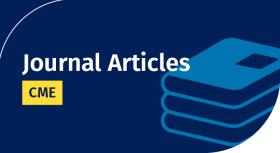
Clinical Presentation and Treatment of High-Risk Sarcoidosis
Sarcoidosis is a multisystem disease of unknown cause with heterogeneous clinical manifestations and variable course. Spontaneous remissions occur in some patients, whereas others
have progressive disease impacting survival, organ function, and quality of life.
Four high-risk sarcoidosis phenotypes associated with chronic inflammation have recently been identified as high-priority areas for research. These include treatment-refractory pulmonary disease, cardiac sarcoidosis, neurosarcoidosis, and multiorgan sarcoidosis. Significant gaps currently exist in the understanding of these high-risk manifestations of sarcoidosis, including their natural history, diagnostic criteria, biomarkers, and the treatment strategy, such as the ideal agent, optimal dose, and treatment duration.
The use of registries with well-phenotyped patients is a critical first step to study high-risk sarcoidosis manifestations systematically. We review the diagnostic and treatment approach to high-risk sarcoidosis manifestations. Appropriately identifying these disease subgroups will help enroll well-phenotyped patients in sarcoidosis registries and clinical trials, a necessary step to narrow existing gaps in understanding of this enigmatic disease.
Target Audience
Pulmonologists, critical care specialists, translational researchers, and clinicians
Learning Objectives
At the conclusion of this activity, learners should be able to:
- Better diagnose high-risk sarcoidosis phenotypes
- Evaluate potential new and existing therapies for sarcoidosis in order to improve patient quality of life
- Appropriately identify sarcoidosis patients with high-risk features in order to refer the patient for appropriate subspecialty care
Accreditation Statement
The American Thoracic Society is accredited by the Accreditation Council for Continuing Medical Education to provide continuing medical education for physicians.
Disclosure Declaration
Article Authorship Disclosures (as submitted to the ATS prior to article publication date)
David M. Perlman, M.D. (University of Minnesota, Minneapolis, MN, USA) reported no relevant financial relationships.
Muthya Tejasvini Sudheendra (University of Minnesota, Minneapolis, MN, USA) reported no relevant financial relationships.
Yuka Furuya, M.D. (University of Minnesota, Minneapolis, MN, USA) reported no relevant financial relationships.
Chetan Shenoy, M.B. B.S., M.S. (University of Minnesota Twin Cities, Minneapolis, MN, USA) reported no relevant financial relationships.
Rajat Kalra, M.B. Ch.B., M.S. (University of Minnesota, Minneapolis, MN, USA) reported no relevant financial relationships.
Henri Roukoz, M.D. (University of Minnesota, Minneapolis, MN, USA) reported no relevant financial relationships.
Jeremy Markowitz, M.D. (University of Minnesota Twin Cities, Minneapolis, MN, USA) reported no relevant financial relationships.
Lisa A. Maier, M.D., M.S.P.H., F.C.C.P. (National Jewish Health, Denver, CO) reported receiving grants from NIH, Foundation for Sarcoidosis, aTYR, University of Cincinnati under a Mallinckrodt Foundation Grant; reported serving on the Foundation for Sarcoidosis Scientific Advisory Board and Americas Association of Sarcoidosis and Other Granulomatous Lung Disease Advisory Board for no financial compensation.
Maneesh Bhargava, M.B. B.S., Ph.D. (University of Minnesota, Minneapolis, MN, USA) reported no relevant financial relationships.
Off-Label Usage Disclosure
Prednisone, Methotrexate, Mycophenolate, Azathioprine, infliximab, Leflunimide, Rituximab, pirfenidone, nintedanib, and adalumumab were discussed for the off-label treatment of sarcoidosis; IVIG was discussed for the off-label treatment of sarcoid associate neuropathy.
Disclosures of AnnalsATS CME Planners
The Annals of the American Thoracic Society (AnnalsATS) original research, commentaries, reviews, and educational content of interest to clinicians and clinical investigators in pediatric and adult pulmonary and sleep medicine and medical critical care. The scope of the journal encompasses content that is applicable to clinical practice, the formative and continuing education of clinical specialists, and the advancement of public health.
The publication of articles that meet these goals by itself is only one step in a multi-step process for the translation of evidence-based improvements in are to clinical practice. Testing for CME credit is designed to function as a next step in the process. This is accomplished through a series of questions written by the author(s) to test that readers have the tools needed to translate recommendations for diagnostic and therapeutic clinical care into clinical practice. Members of the AnnalsATS editorial board review these questions and edit these questions for clarity, educational content, and the quality of the evidence supporting the response to the question..
AnnalsATS CME Planners
Alan M. Fein, M.D.
Podcast Editor, AnnalsATS
Dr. Fein reported that he has no financial relationships with ineligible companies.
Constantine Manthous, M.D.
Associate Editor, AnnalsATS
Dr. Manthous reported that he has no financial relationships with ineligible companies.
Gregory A. Schmidt, M.D.
Editorial Board, AnnalsATS
Dr. Schmidt reported payments for writing a textbook on critical care medicine (McGraw-Hill) and for writing contributions for UptoDate..
Instructions to Receive Credit
To receive credit for this journal article:
- Read the journal article. Keep track of how long it takes you to read it.
- Once you open the article, the Post-Test becomes available. After reading the article, answer the post-test questions. You must answer all questions correctly to earn credit. You may take the test as many times as you like.
- Once you pass the Post-Test, the Evaluation becomes available. Answer all the evaluation questions.
- Once you complete the evaluation, select the amount of credit to receive based on the time it took you to read the article.
- You can view, save and print your Certificate by pressing the Certificate button.
- To review the credits you've earned in this system and reprint certificates, go to the My Learning drop-down list. Then select Transcript.
Available Credit
- 1.00 AMA PRA Category 1 Credit(s)™The American Thoracic Society designates this for a maximum of 1.00 AMA PRA Category 1 Credit(s)™. Physicians should claim only the credit commensurate with the extent of their participation in the activity.
- 1.00 Participation

 Facebook
Facebook X
X LinkedIn
LinkedIn Forward
Forward